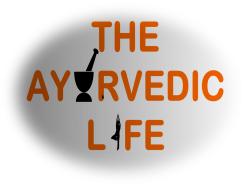Arachauvitta Sambhar has a unique flavor that its counterpart made with ready powder cannot claim to have. Toasted whole spices and coconut that are added as a ground paste impart a depth of taste, aroma and flavor that becomes the signature for this delectable dish that goes well with rice as well as rotis or dosas/idlis etc.
Ingredients:
- Chopped Vegetables (you can use as little or as much as you want – I had 3 cups of vegetables) (potatoes, drumsticks – moringa, carrots, zucchini, beans, okra)
- Chana Dhal (bengal gram lentil) (1 tbsp)
- Coriander Seeds (1 heaped tbsp)
- Fenugreek Seeds (1/2 tsp)
- Dry red chilies (I used 2 Byadige chillies)
- Turmeric powder (1/2 tsp)
- Asafetida powder (a few generous pinches)
- Curry leaves (a handful)
- Coconut (grated) (a heaped tbsp)
- Sambhar powder (1 tbsp)
- Mustard seeds (3/4 tsp)
- Tamarind paste (2 tbsp)
- Jaggery/Sugar (1 tsp)
- Salt (to taste)
- Oil (1 tsp)
- Ghee (1 tsp)
- Toor dhal (3/4th cup raw)
Method:
- Pressure cook the toor dhal with enough water and a little turmeric powder until well done and mushy.
- Chop the vegetables into cubes.
- Saute the vegetables lightly in oil, starting with okra, then the other vegetables.
- Add salt, turmeric powder, some curry leaves, and water till the vegetables are covered and cook until almost done, but not completely cooked. Switch off flame.
- Add tamarind paste, some sambhar powder, hing, sugar and keep aside.
- In a separate pan, dry roast or in a little oil roast the whole spices and chilies until they are browned and a nice aroma starts emanating from them.
- Add grated coconut and some curry leaves. Toast for a few minutes till an aroma comes from the coconut getting toasted.
- Let this cool down, add some water, and grind into a fine paste. Add this paste into the cooked vegetables.
- Add cooked and mashed dhal to the above mixture.
- Adjust the water quantity, so that your sambhar has the consistency you desire and bring it to a boil.
- For tadka, heat some ghee (or oil), add mustard seeds, and wait for them to splutter. Add a pinch of hing and fenugreek powder (optional), some curry leaves and pour into the sambhar.
- Adjust tastes and garnish with coriander leaves, if you want to. Serve hot with rice or a snack of your choice like idli/dosa/chapathi etc.
Tastes (Rasa):
Sweet (lentils, vegetables, oil, ghee, sugar), sour (tamarind), salty (salt), bitter (fenugreek), pungent (chilies), astringent (asafetida).
Doshic Influence:
This is a very balanced dish taste (rasa) wise and also quite tridoshic. To enhance the digestibility, there are a good mix of spices with both cooling (coriander) and heating (chilies) veerya. Ghee adds to the tridoshic nature of the recipe. Pittas may reduce the amount of chilies. Vatas will benefit by ensuring that the lentils are well cooked and roasted.
Effect on the Mind (Gunas):
This is a sattvic recipe, if well cooked, mildly flavored, and made using fresh ingredients. Adding too much of tamarind or chilies can make it more rajasic.










